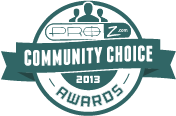When we started our business many moons ago, relatively
little information on how to run a translation business was available. We only
wish that Corinne McKay’s classic “How to succeed as a freelance translator”
was available back then, but it came out in 2006, after we’d already made many
beginners’ mistakes. The new generation of translators
and interpreters are in the lucky position of having many books at their
disposal, and there’s no doubt that Corinne’s book, now in its second edition,
is the best book on the market.
Full disclosure: we are very good friends with
Corinne, especially Judy, but we were fans and attended her seminars long
before Judy had the pleasure of meeting Corinne at the ATA conference in
Seattle in 2005. However, if the book weren’t any good, we would certainly tell
you. As you might have guessed, it’s a fantastic book. The first edition sold more
than 4,500 copies around the world, and we have no doubt that the second
edition will outsell the first.
We reviewed the first edition a few years ago. The title of
that blog post was “The bible for freelance translators” and that continues to
hold true. The long-awaited second edition, which many, including us, pestered
Corinne about writing for quite a while, was released to rave reviews last
August. You may ask yourselves why it took us so long to review a book that we
are clearly very fond of. The answer is that Judy had committed to doing an
original, not-before-published review of the book for Translation Ireland, and
we had to come up with two different reviews. Here it is.
This book should be required reading at every university or
college that teaches any class related to translation. At the very least, it
should be essential reading for every aspiring and established linguist. We
always continue learning from others, and to say we’ve learned a few things
from Corinne’s book is an understatement – there’s a wealth of information from
which linguists at all levels can benefit. Corinne's writing, known to many through
her outstanding blog, Thoughts on
Translation, is clear and precise. She’s perhaps one of the most gifted
writers in the industry, and her ability to communicate oftentimes complex
material in an easy-to-understand manner is unsurpassed. There’s no pretense or
purposefully difficult writing here – you are very much reading a book by the
approachable, highly successful and laid-back Coloradan translator next door.
After reading the book, you might be tempted to knock on Corinne’s door to grab
some coffee to continue the conversation.
It might be a sign of the times that the amount of e-mails about how to get started in the industry we receive have
increased exponentially. We aren’t able to give individual advice to everyone
who asks – we’d spend all day answering e-mail – but we always recommend
Corinne’s book. Her smart, 200-page book will tell you everything you need to
know about the industry. It will tell you how rewarding of a profession this
is, but readers will also learn about the challenges of building a business and
that there’s no magic button to press (or wand to wave) that will make you a successful
translator. It’s all hard work, but Corinne has made it easier for you by
compiling all the information that would take you months to compile elsewhere.
If there were any true secrets to being successful in our business, Corinne
would surely detail them in her book. In the absence of real secrets, she’s
written a book that tells you everything you need to know to get set up for
success. The book assumes that you have the language skills necessary to become
a translator.
The fully updated second version of the book might be even
better than the first edition. It’s a bit longer with an additional chapter,
has a redesigned cover and it’s beautifully
laid-out. Our well-thumbed first edition has been sitting on our bookshelves
for years, and now we had to put a “display only” sticker on the new edition.
We take the book to industry events from our local translator and interpreter
associations, but we want to make sure the copies don’t walk off – after all,
they are our prized autographed copies.
Here’s a quick overview of some of the book’s highlights:
- Table of contents and index. They make it easy to find what’s in every chapter, and they make this book a fantastic reference source. Say you are looking for “rush charge” because a customer just asked you, on a Friday, to translate a document that’s due Monday morning. You go to the index and quickly find out that information on that topic can be found on both pages 30 and 150. It’s the print equivalent of ctrl + F, with the difference that you are holding a gorgeously bound book in your hand.
- The 10 chapters start off with a great overview of the translation business. Section 1.5, which gives you brief description of the kinds of work that’s available for linguists, is a fantastic tool to help you decide what kind of work is right for you. Chapter 2 (Launching your freelance translation business) contains everything you need to know about getting started. From advice on how to set up your home computer to how to polish your résumé for translation agencies, this chapter will make your early business decisions infinitely easier. Our favorite section here is the handy start-up checklist.
- Chapter 3 (Your first year as a freelance translator) will give you a reality check about what to expect in your first year. This chapter contains a plan in four stages, including what every new freelancer should do in their first year.
- Chapter 8 (Translation and technology) is a brand-new chapter, and it provides solid guidance for linguists who are not sure what to make of translation environment tools, also known as computer-assisted translation software and translation memory software. The chapter starts out with a good overview of the role of technology in our industry in the 21st century. The bottom line is that it’s here to stay and that you should embrace it. This chapter will teach you how not to be afraid of technology and will give you a much-needed introduction into all the available tools. Do you need speech recognition software? How much does Trados cost? Are free tools available? Should I invest in one of the proprietary tools?
- Chapter 9 (Rates, contracts and terms of service) answers many of the questions that beginning translators have, such as setting your translation rates (no specific rate recommendations are made, as the author respects the ruling antitrust legislation on the topic), how to research your customers, how to deal with international payments, questions you should ask before accepting a project, how to word your terms of service, etc. It’s a goldmine of information, and we have quoted from this chapter more than any other chapter. This chapter also includes valuable information on how to deal with adversity. We particularly like the section on non-payment, which all of us will have to face at some point. The book includes dunning letters that you can use to remind your clients that you are expecting payment. The author even includes a sample invoice on page 164 – she really does make it easy for her readers.
A few months ago, Corinne invested the time and energy
necessary to make this book available on the Kindle, which is a fantastic addition. Her book was originally published by Lulu.com, and while it’s also
available on Amazon and a number of other outlets, please consider supporting
Lulu by purchasing the book on their site. This smart book will make a great
gift for any translator – beginning or not. It will give you all the
advice you need to get started in the industry or to have a more structured
approach in your business. If this book is not the bible for freelance
translators, we don’t know what is.
We are sometimes surprised how
little newcomers are willing to invest when starting in the business. We
usually recommend five or six books, and many times, we are asked to narrow it
down to one. If you only have $19.95 to spare to start or re-start your translation career, then we suggest
you spend it on purchasing "How to succeed as a freelance translator". Next
time you see Corinne at a conference, bring your copy and have her sign it. It
might have collector’s value at some point – we are betting on that and keeping
our copies safe and pristine. Happy reading!

























5 comments:
Dear Judy and Dagmar,
Thank you for this article. I'll probably read Corinne's book. Not only because of your post, but also because several other fellow translators told me that it was a fantastic tool for all freelance translators.
I've been running my translation business for a few years now and I wanted to point out that your book "The Entrepreneurial Linguist" has really been a great source of inspiration for me as well. I just wanted to let you know. Thank you!
@Corinne: our pleasure, and you have a great name, too! You will love this book - everyone does. Thanks so much for your kind comment about our book. We are delighted to hear that you have enjoyed it.
Wow, I'm already the second Corinne to comment on this post, how exciting! Thanks Judy and Dagy for this insightful and flattering review. I really appreciate your support and it's an honor to be in the company of translation authors like yourselves! When I started freelancing 10 years ago, there were almost no resources for translators who wanted to learn how to run a business and I'd like to think that we've come a long way since then!
@Corinne: you are welcome; it's very well deserved. We completely agree: 10 years ago, we would have given anything for a wonderful how-to guide like yours. :)
@Judy and Dagmar: I have just finished Corinne’s book and I cannot agree more with what you wrote in your review. This is definitely a must-read for all translation students and beginning translators. Along with your book and “The Prosperous Translator” by Chris Durban, Corinne’s book is one of the most essential tools for freelancers in our industry and it should find a place on any translator’s bookshelf.
@Corinne: I would like to thank you for writing this book. I just loved it and I will recommend it to any newcomer in the translation industry. We don't have such great books written in French (at least not that I know of). Our literature rather focuses on theory. Yet, it would obviously be a real plus to discuss more practical aspects as well.
Post a Comment